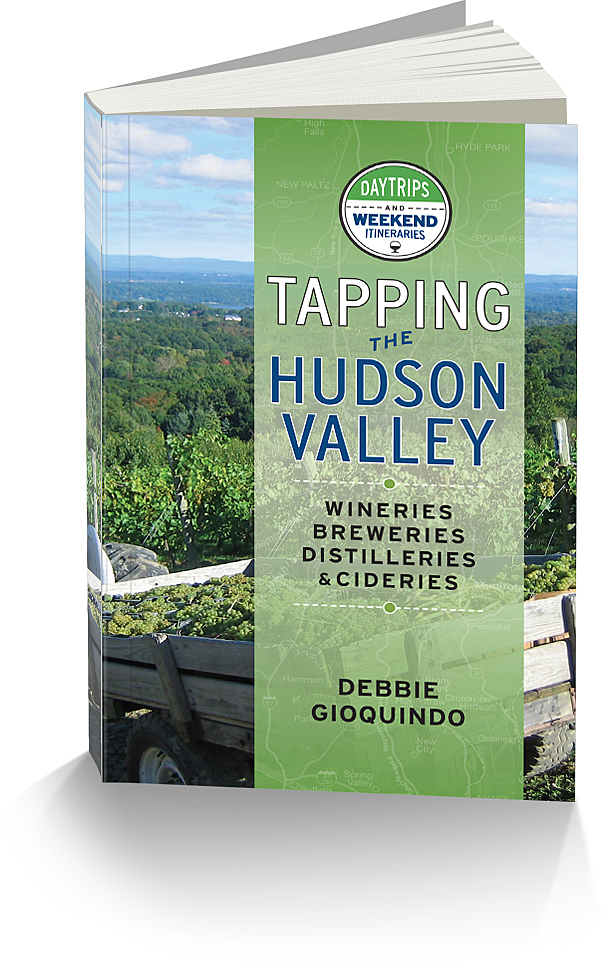I was reading Steven Kolpan’s blog the other day and he had an interesting article about the Riesling produced in the Hudson Valley. He is correct as nobody to my knowledge in the valley produces estate bottled Riesling. So the Rieslings you see in the wineries of the Hudson Valley really don’t express the true “terrior” of this region. I do know that Whitecliff Vineyards grows Riesling but they blend it with Riesling sourced from other vineyards in New York State.
I am thrilled to learn from Steven that Millbrook Vineyards & Winery will soon be producing estate bottled Riesling in 2013. I believe in a passing conversation it was mentioned to me a while ago but like I said, it was a passing conversation and didn’t register where it should have. I am really looking forward to their release!
Steven sat down with John Graziano and David Bova from Millbrook and here is what he learned about the project.
•” Millbrook planted particular “clones” of Riesling developed at German agricultural research stations that emphasize the characteristics that John Graziano is looking for in a good dry Riesling, both in the vineyard and the winery. According to the winemaker, he chose “Neustadt 90 and Geisenheim 198” With advice from Fred Frank of Konstantin Frank winery in the Finger Lakes and Chris Gerling of Cornell University’s New York State Agricultural Experiment Station in Geneva, New York, 90 and 198 will provide a bit of diversity in the finished wine. 90 is all about aromatics and varietal character in the finished wine, and 198 shows concentration of lemon/lime acidity. In the vineyard, 90 develops higher sugars for better alcohol balance in the finished wine. The vines will be grafted to rootstock “3309.” The overwhelming majority of wine grapes – vitis vinifera – are not planted on their own roots, but native American rootstock, which is both disease resistant – and very important in this case – 3309 can survive the harsh winters of the Hudson Valley and responds well to dramatic changes in climate. (Note: “Cloning” grapes has nothing to do with the Frankenfood approach to interspecies cloning. A “clone” is a varietal crossing – Pinot Noir and Pinot Noir – approximating what insect vectors might perform by long-term pollination to bring about desirable characteristics in the vine; “cloning” hastens the process.)
• The vines are planted on a hillside – the Castle Hill vineyard block, just south of Wing’s Castle, a handmade Addams Family-style castle built by two artists, Peter and Toni Ann Wing. The castle overlooks the Millbrook vineyards (formerly Wing Farm). The hillside is ideal for Riesling, a late-ripening grape, because the sunshine on the hillside helps to protect against late-season frosts and the dynamic air currents will help to prevent moisture-based rot in the grapes.
• Vineyard yields will be extremely low, about 2.5 tons per acre, insuring flavor concentration in each grape cluster. That means that Millbrook will be able to produce about 400 cases of wine, a tiny production, so the wine will be sold in the tasting room at the winery and to local customers, not through conventional distribution channels. If Graziano, Bova, and Millbrook owner John Dyson are satisfied with the quality and if the wine proves popular Millbrook has several other sites that should prove ideal for further planting.
• The Riesling planting program cost about $10,000 per acre, and Millbrook will have to purchase several large stainless steel tanks with refrigerated jackets to ferment and make the wine in a crisp, fruit-driven style. Like most of the best Riesling produced all over the world, the wine will not see any small oak barrels, as such cooperage can destroy the fresh, fruity flavors of Riesling.”
To read more about Steven Kolpan, his thoughts on Hudson Valley Riesling and read his blog visit http://stevenkolpanonwine.blogspot.com/

